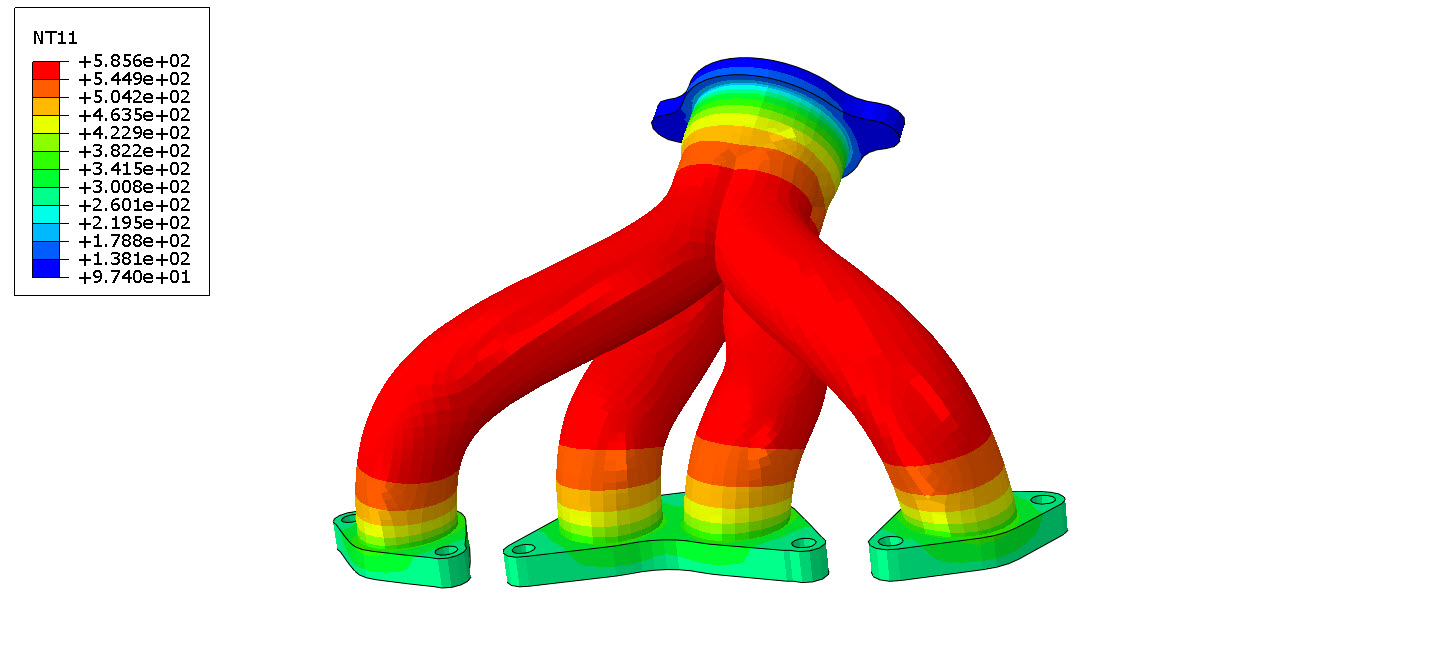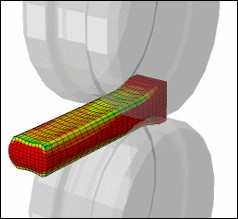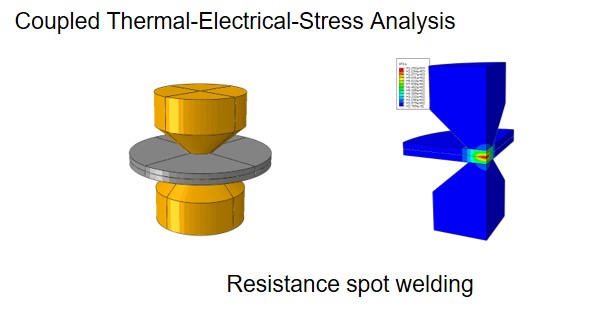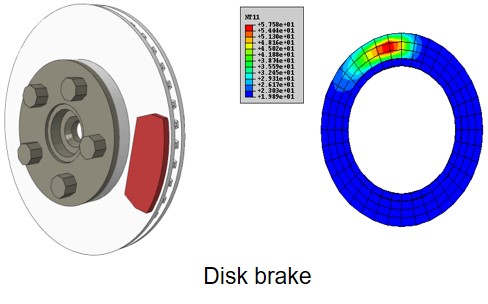
23 Apr Which type of thermal analyses can be performed?
There are different heat transfer and thermal analyses available that help you predict the behavior of your product during the development phase. In this blog post you will find a description of the different procedures to solve these simulations.
Thermal simulations with Finite Element Analysis
There are various of uncoupled and coupled finite element simulations possible to include the thermal domain in your simulations.
Below a brief description of the different procedures is given.
Heat transfer and thermal-stress analysis
Uncoupled heat transfer analysis
When performing uncoupled heat transfer analysis, the temperature field is calculated without knowledge of the stress/deformation state or the electrical field in the bodies being studied. Pure heat transfer problems can be transient or steady-state and linear or nonlinear. Heat transfer problems can involve conduction, forced convection or boundary radiation. Below the heat transfer FEA simulations results of a manifold are shown.

Sequentially coupled thermal-stress analysis
Sequentially coupled thermal-stress analysis is useful when the stress/displacement solution is dependent on a temperature field but there is no inverse dependency. Sequentially coupled thermal-stress analysis first solve the pure heat transfer problem. Afterwards the temperature solution is read into a stress analysis as a predefined field. In the stress analysis the temperature can vary with time and position but is not changed by the stress analysis solution. Abaqus allows for dissimilar meshes between the heat transfer analysis model and the thermal-stress analysis model. Temperature values will be interpolated based on element interpolators evaluated at nodes of the thermal-stress model.
Read the following paper on sequentially coupled, nonlinear thermal stress modeling capabilities in Abaqus/Standard that have been used to study the quasi-dynamic structural behaviors that led to the progressive collapse of WTC 5.
Fully coupled thermal-stress analysis
A coupled temperature-displacement procedure is used to solve simultaneously for the stress/displacement and the temperature fields.
A coupled analysis is used when the thermal and mechanical solutions affect each other strongly.An example where this procedure could be used is in rapid metalworking problems where the inelastic deformation of the material causes heating, and in contact problems the heat conducted across gaps may depend strongly on the gap clearance or pressure. Both Abaqus/Standard and Abaqus/Explicit provide coupled temperature-displacement analysis procedures, but the algorithms used by each program differ considerably.
In Abaqus/Standard the heat transfer equations are integrated using a backward-difference scheme, and the coupled system is solved using Newton’s method. These problems can be transient or steady-state and linear or nonlinear.
In Abaqus/Explicit the heat transfer equations are integrated using an explicit forward-difference time integration rule, and the mechanical solution response is obtained using an explicit central-difference integration rule. Fully coupled thermal-stress analysis in Abaqus/Explicit is always transient.

Adiabatic analysis
An adiabatic mechanical analysis can be used in cases where mechanical deformation causes heating, but the event is so rapid that this heat has no time to diffuse through the material. An adiabatic analysis can be static or dynamic and linear or nonlinear.
Coupling thermal with electrical phenomena
Coupled thermal-electrical analysis
A fully coupled thermal-electrical analysis capability is provided for problems where heat is generated due to the flow of electrical current through a conductor. Coupled thermal-electrical problems are those in which coupling between the electrical potential and temperature fields make it necessary to solve both fields simultaneously. An example of this problem can be found in the electrical heat fusing.

Fully coupled thermal-electrical-structural analysis
A coupled thermal-electrical-structural procedure is used to solve simultaneously for the stress/displacement, the electrical potential, and the temperature fields. A coupled analysis is used when the thermal, electrical, and mechanical solutions affect each other strongly.
An example of such a process is resistance spot welding, where two or more metal parts are joined by fusion at discrete points at the material interface. The fusion is caused by heat generated due to the current flow at the contact points, which depends on the pressure applied at these points.
These problems can be transient or steady-state and linear or nonlinear.

Including heat due to friction
Due to the friction and loading, normally Abaqus will calculate the amount friction energy that will be dissipated. When using the gap heat generation, you can specify which fraction of this energy is transferred towards thermal heat. The worst case is a fraction of 1, so all dissipated energy will become thermal heat.

If you have questions related to which types of thermal analysis can be performed, feel free to contact us or write an email to info@4realsim.com


